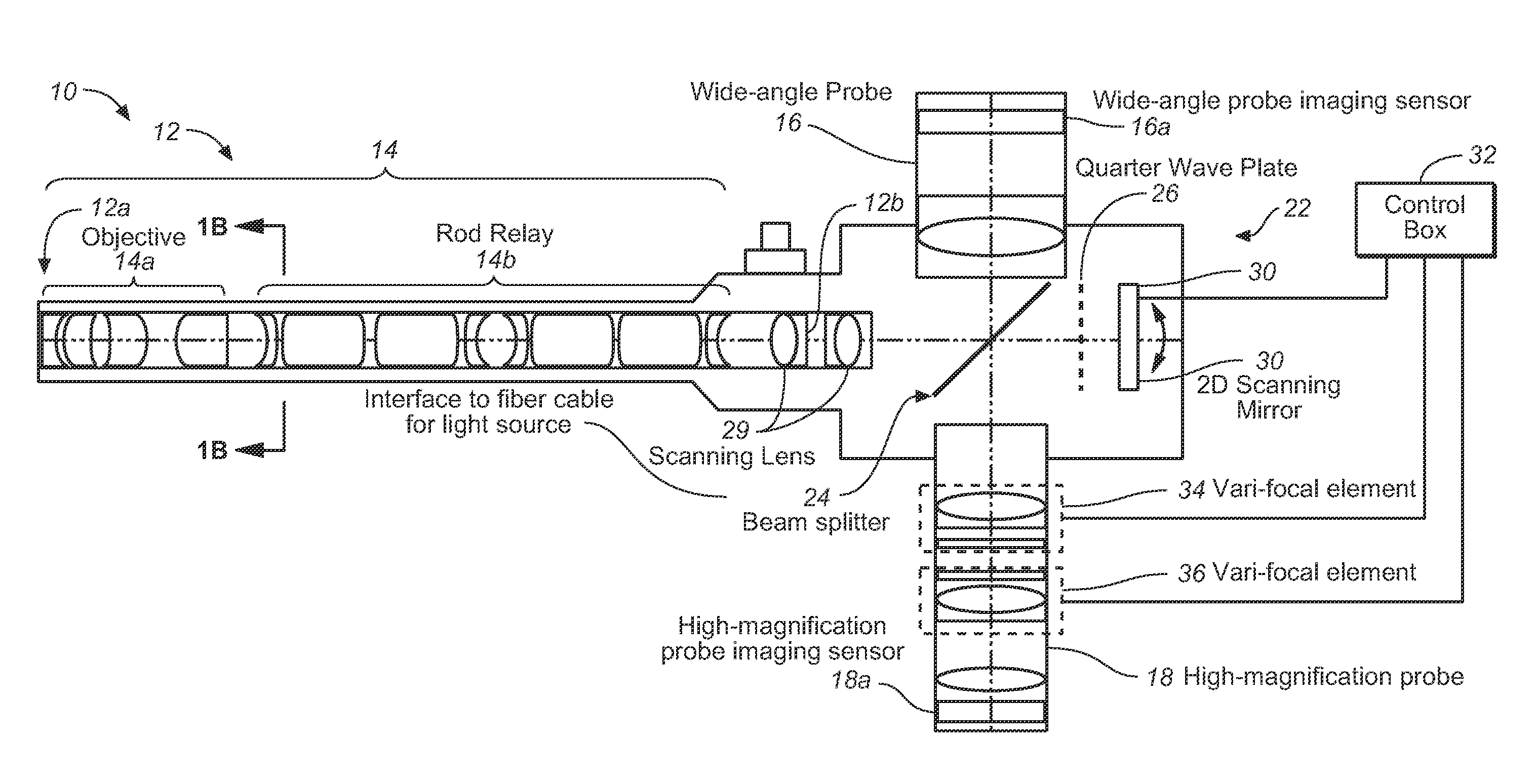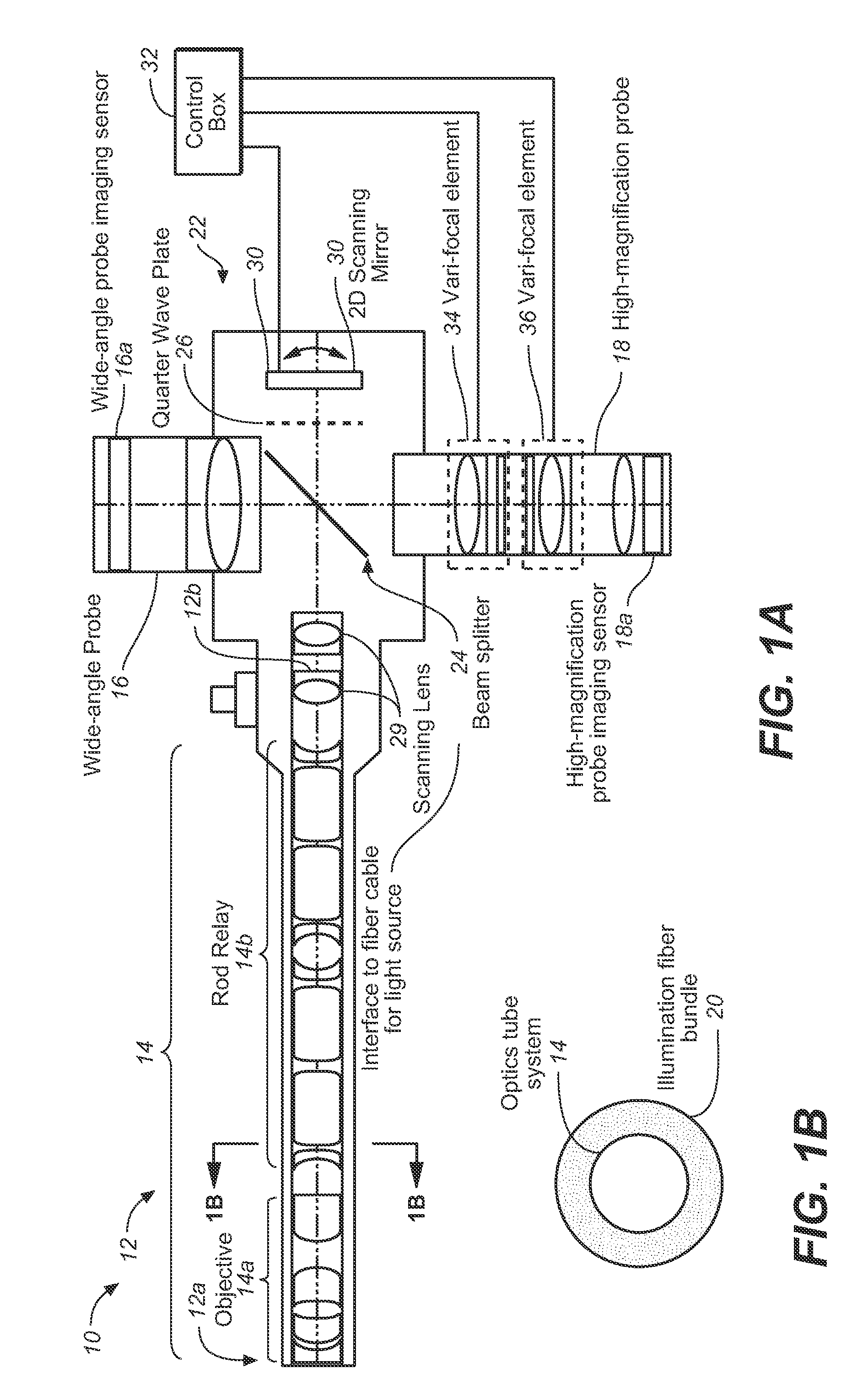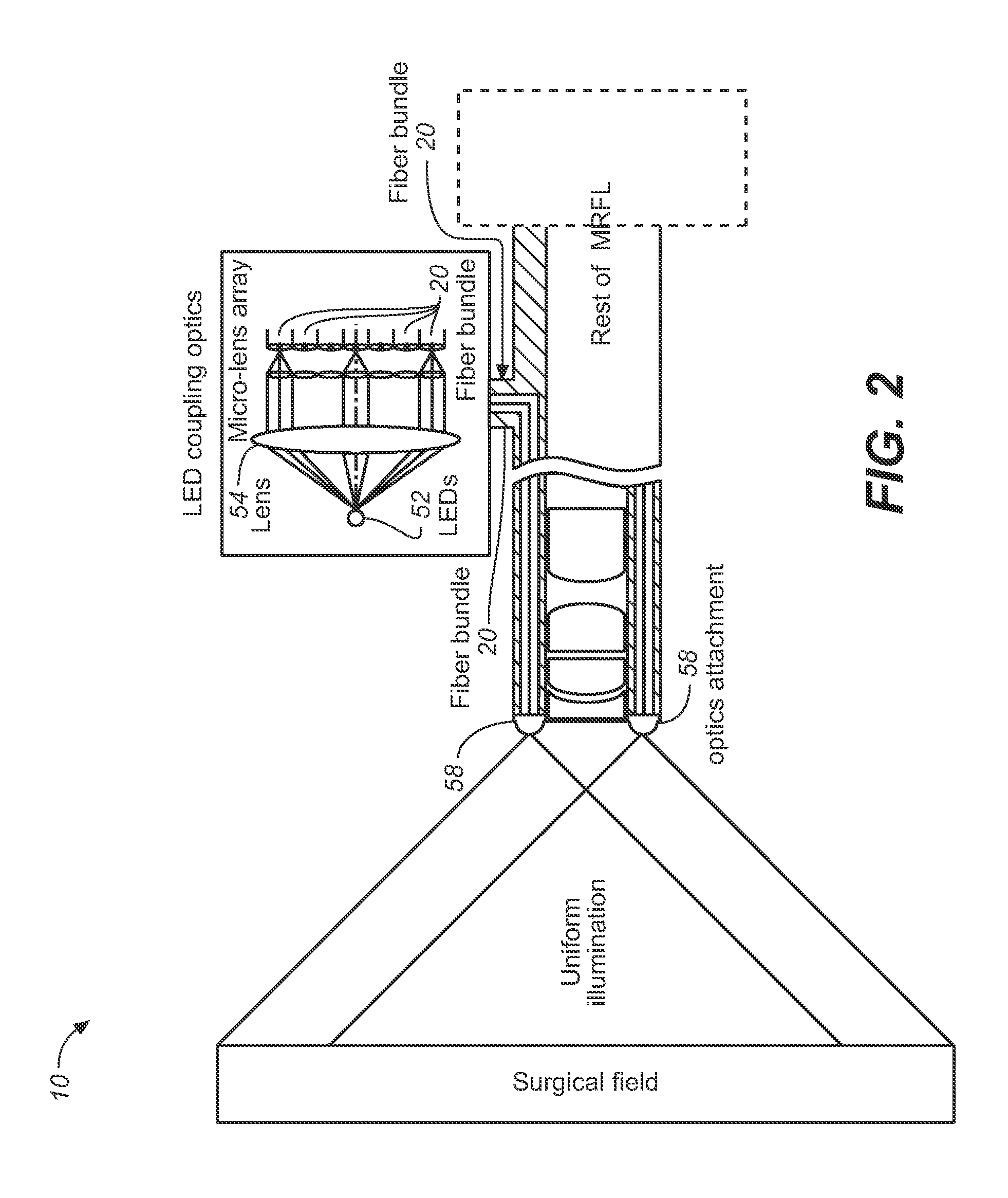Multi-Resolution Foveated Endoscope/Laparoscope
a foveated endoscope and multi-resolution technology, applied in the field of multi-resolution foveated endoscope/laparoscope, can solve the problems of reducing resolution, affecting the accuracy of laparoscopic images, and the ability of standard laparoscopes (sl) to acquire both wide-angle and high-resolution images simultaneously through a single scop
- Summary
- Abstract
- Description
- Claims
- Application Information
AI Technical Summary
Benefits of technology
Problems solved by technology
Method used
Image
Examples
Embodiment Construction
[0025]We developed a multi-resolution foveated laparoscope (MRFL) aiming to address a number of the clinical limitations described in the background section. The MRFL technology can (1) simultaneously obtain both wide-angle- and high-magnification images of a surgical area in real-time in a single, fully integrated scope, (2) yield ultra-high spatial resolution which is over 3 times better than a SL at a close-up working distance, (3) automatically scan and engage the high-magnification imaging probe to any sub-region of the surgical field through region-of-interest (ROI) tracking capabilities, (4) vary the optical magnification of the high-resolution imaging probe without the need of physically advancing or withdrawing the scope, (5) maintain a low-length profile, optimized for operating at a long WD, providing both superb spatial awareness and high-magnification views simultaneously. It allows the scope to be secured to the camera port with reduced conflicts with other surgical in...
PUM
 Login to View More
Login to View More Abstract
Description
Claims
Application Information
 Login to View More
Login to View More - R&D
- Intellectual Property
- Life Sciences
- Materials
- Tech Scout
- Unparalleled Data Quality
- Higher Quality Content
- 60% Fewer Hallucinations
Browse by: Latest US Patents, China's latest patents, Technical Efficacy Thesaurus, Application Domain, Technology Topic, Popular Technical Reports.
© 2025 PatSnap. All rights reserved.Legal|Privacy policy|Modern Slavery Act Transparency Statement|Sitemap|About US| Contact US: help@patsnap.com



